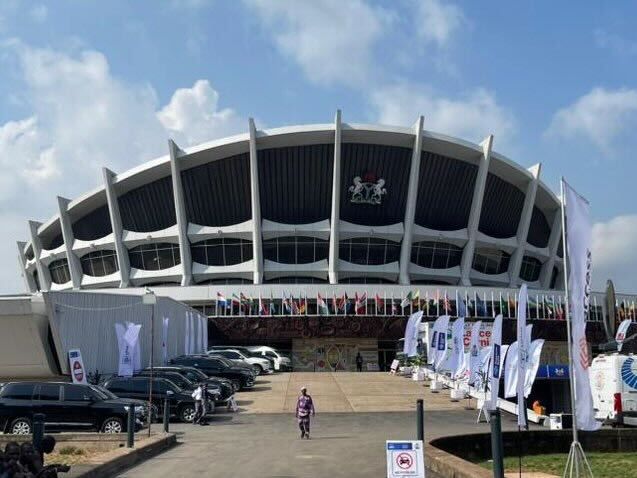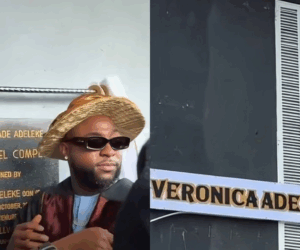
On October 1, 2025, President Bola Tinubu inaugurated the newly renovated National Arts Theatre, Iganmu, Lagos, now renamed the Wole Soyinka Centre for Culture and the Creative Arts. The reopening was one of the highlights of Nigeria’s 65th Independence Day celebrations. It’s a symbolic alignment of the nation’s cultural pride with its political history.
Originally built in the mid-1970s to host FESTAC ’77, the National Theatre has long stood as both an architectural landmark and a cultural beacon. But years of neglect dimmed its brilliance. This overhaul, financed by the Central Bank of Nigeria (CBN) and the Bankers’ Committee, restores it to world-class status while reintroducing it as a launchpad for Nigeria’s creative industries.
What’s New Inside the Theatre
WATCH: Enjoy the view of the newly renovated National Theatre, Now Wole Soyinka Centre for Culture and the Creative Arts. pic.twitter.com/3oeul1EjDn
— NTANetwork (@NTANewsNow) October 1, 2025
According to a joint statement from the CBN, Bankers’ Committee, and the Ministry of Arts, Culture, and Creative Economy, the renovation meets the highest global standards for theatre and performance.
Key upgrades include:
-
A completely overhauled HVAC system
-
Advanced fire safety features and modern electrical, water, and sewage systems
-
17 new passenger lifts for accessibility
-
Solar power integration for sustainable energy
-
Advanced stage engineering and audio-video-lighting technology
-
Restored interiors, refurbished furniture, and historic artworks across the façade and galleries
The main bowl now seats 5,000, with banquet halls accommodating over 3,000, three cinemas, exhibition areas, dressing rooms, VIP spaces, and industrial kitchens. All of these make the centre versatile for everything from stage plays to international conferences.
Why This Matters for Lagos
For a city that prides itself as Nigeria’s cultural capital, the renovated National Theatre signals more than restored infrastructure. It is a statement of intent: Lagos is ready to position itself as a global hub for performing arts, film, creative industries, and cultural tourism.
Governor Babajide Sanwo-Olu described the centre as “not only a showcase for arts, tourism, and culture, but also a world-class venue for global conferences and performances.” In addition, the theatre’s location in Iganmu is connected by road networks and increasingly accessible through the Lagos Blue Line and future transit expansions. That also gives it logistical advantages over newer venues.
For Lagosians long accustomed to road congestion and limited arts spaces, this is a badly needed win. It promises to host everything from stage plays and music concerts to film premieres and dance festivals, as well as international arts conferences.
Cultural and Political Symbolism
TThe timing of the inauguration — Independence Day — was deliberate. By tying the reopening to Nigeria’s 65th anniversary, the government underlines the theatre’s symbolic weight as a repository of national history and culture, as CBN Governor Olayemi Cardoso put it. Minister of Arts and Culture Hannatu Musawa called it “a gift to the nation and a source of pride.”
The presence of Prof. Wole Soyinka, after whom the theatre was renamed in July 2024, added dignity, with performances from the National Troupe reinforcing the building’s cultural rebirth.
Nigerians React
While officials called it a “milestone,” Nigerians themselves have been weighing in online with excitement, pride, and some healthy skepticism. Many see it as the long-awaited return of an iconic arts space; others are keen to see if programming and accessibility will match the grandeur of the renovations.
Here’s a look at what people are saying:
What’s Next for the National Theatre
The relaunch signals a busy calendar ahead of Detty December. Early hints suggest a return of film festivals, theatre showcases, and arts exhibitions to the venue, alongside family-friendly festivals like past animation and children’s theatre programs. With the National Troupe and other creatives already on stage for the inauguration, the programming pipeline is clearly in motion.
For Lagos’ creative economy, this could be transformative: a rejuvenated space for artists, a magnet for tourists, and a symbol of Nigeria’s ability to marry heritage with modernity.
In short, Lagos finally has its cultural heartbeat back and “the stage is set” for a new era.’








